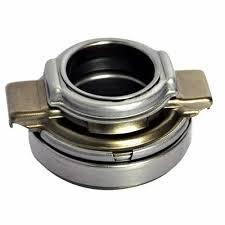Clutch Release Bearing: A Vital Component for Smooth Gear Shifting

Every time you shift gears while driving, a set of mechanical components silently work behind the scenes to ensure that the transition is smooth and efficient. Among these, the clutch release bearing plays a crucial but often overlooked role. Without it, your driving experience would be riddled with jerks, resistance, and potential transmission failure.
This article explores the importance of the clutch release bearing, how it works, its applications, and why choosing a high-quality one can significantly affect the performance and longevity of your vehicle.
What is a Clutch Release Bearing?
A clutch release bearing—also known as a throw-out bearing—is a key component of the manual transmission system. It enables smooth engagement and disengagement of the clutch by reducing friction between moving parts. When the driver presses the clutch pedal, the bearing pushes against the diaphragm spring of the pressure plate, disconnecting the engine from the transmission.
This function allows for gear shifting without stalling the engine, ensuring smooth transitions and protecting the internal components of the transmission system.
How It Works
Here’s a quick breakdown of the process:
-
Clutch pedal is pressed
The clutch release bearing moves forward, pressing the diaphragm spring. -
Clutch disengages
This separates the engine from the transmission, allowing for gear changes. -
Clutch pedal is released
The bearing retracts, and the clutch engages again, transferring power from the engine to the wheels.
Without a functional clutch release bearing, gear transitions would be rough and damaging to the transmission system over time.
Key Benefits of a High-Quality Clutch Release Bearing
✅ Smoother Gear Shifts
Reduces vibration and resistance during gear changes.
✅ Enhanced Durability of the Clutch System
Prevents unnecessary wear on the pressure plate and diaphragm spring.
✅ Quiet Operation
Minimizes noise caused by friction between moving parts.
✅ Increased Driver Comfort
Leads to a smoother, more responsive driving experience.
Applications Across Vehicle Types
While typically found in manual transmission vehicles, clutch release bearings are also used in:
-
Commercial trucks
-
Agricultural machinery
-
Heavy-duty construction equipment
-
Performance and racing cars
These bearings are engineered to withstand high RPMs and repeated engagement cycles, making durability a key performance metric.
Signs of a Failing Clutch Release Bearing
It’s crucial to detect early signs of failure to avoid damage to the clutch assembly. Common symptoms include:
-
Unusual grinding or rattling noise when pressing the clutch pedal
-
Difficulty in shifting gears
-
Vibration felt in the clutch pedal
-
Slipping clutch or delayed engagement
If any of these signs appear, replacing the clutch release bearing promptly is vital to avoid more extensive—and expensive—repairs.
Why Choose NMR Bearing?
When it comes to sourcing automotive components, quality and precision are non-negotiable. NMR Bearing offers high-performance clutch release bearings manufactured to meet strict durability and compatibility standards. Designed for both OEM replacements and aftermarket applications, these bearings deliver dependable performance under various operating conditions.
By investing in a premium bearing, you not only extend the life of your vehicle's transmission but also improve overall driving experience and safety.
Conclusion
Though compact in size, the clutch release bearing plays a major role in vehicle drivability. Its job of enabling smooth clutch operation is vital to the health of the transmission system and the comfort of the driver. Whether you're a mechanic, car enthusiast, or everyday driver, understanding and maintaining this crucial part can save time, money, and hassle down the road.
- Art
- Causes
- Crafts
- Dance
- Drinks
- Film
- Fitness
- Food
- Games
- Gardening
- Health
- Home
- Literature
- Music
- Networking
- Other
- Party
- Religion
- Shopping
- Sports
- Theater
- Wellness


